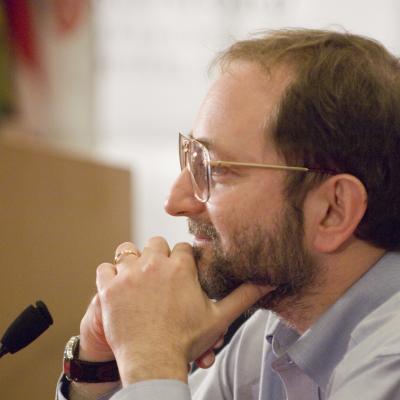Andrew Fire, PhD
Lab Head
Andrew Fire, Stanford University
A native of Santa Clara County, California, Dr. Fire recieved training at UC Berkeley (Mathematics BA: 1975-1978), MIT (Biology Ph.D.: 1978-1983), and the Medical Research Council Laboratory in Cambridge UK (Postdoctoral: 1983-1986). From 1986 to 2003, Dr. Fire was on the staff of the Carnegie Institution of Washington's Department of Embryology in Baltimore Maryland. During his time in Baltimore, Dr. Fire assumed the position of Adjunct Professor of Biology at Johns Hopkins University. In 2003, Dr. Fire joined the faculty of the Departments of Pathology and Genetics at Stanford University School of Medicine.
Dr. Fire's lab studies the mechanisms by which cells and organisms respond to genetic change.
The genetic landscape faced by a living cell is constantly changing. Developmental transitions, environmental shifts, and pathogenic invasions lend a dynamic character to both the genome and its activity pattern.They study a variety of natural mechanisms that are utilized by cells adapting to genetic change. These include mechanisms activated during normal development and systems for detecting and responding to foreign or unwanted genetic activity. At the root of these studies are questions of how a cell can distinguish "self" versus "nonself" and "wanted" versus "unwanted" gene expression.
His lab primarily make use of the nematode C. elegans in our experimental studies. C. elegans is small, easily cultured, and can readily be made to accept foreign DNA or RNA. The results of such experiments have outlined a number of concerted responses that recognize (and in most cases work to silence) the foreign nucleic acid. One such mechanism ("RNAi") responds to double stranded character in RNA: either as introduced experimentally into the organism or as produced from foreign DNA that has not undergone selection to avoid a dsRNA response. Much of the current effort in his lab is directed toward a molecular understanding of the RNAi machinery and its roles in the cell. RNAi is not the only cellular defense against unwanted nucleic acid, and substantial current effort in his lab is also directed at identification of other triggers and mechanisms used in recognition and response to foreign information.
My Presentations
We are still accepting POSTER abstracts. Once you have submitted an abstract, and it is approved, it will appear here a few days ahead of the meeting.


